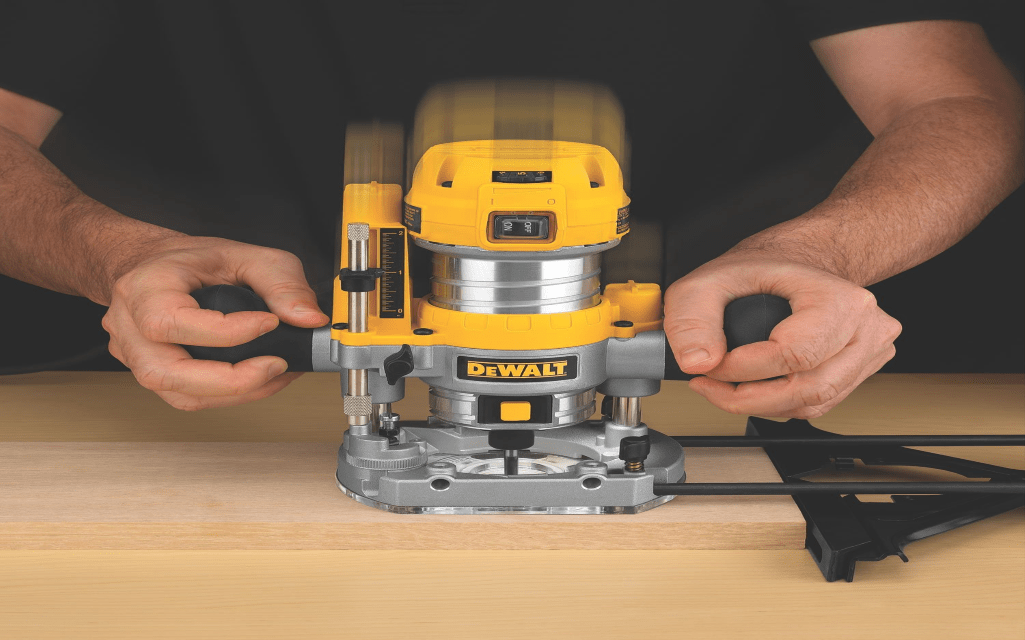A wood router is an extremely adaptable power device for applying essential or complex edge profiles on a bit of wood. With some training, the router can be utilized to play out a wide range of carpentry activities. Many carpenters use these routers with proper accessories to design and develop a wide range of furniture and other similar activities. However, working with these routers requires some prior knowledge about the system. In case you’re an amateur carpenter beginning in your art and don’t have much involvement with securely utilizing either a fixed or plunge router, this is an awesome place to begin with the nuts and bolts.
When you are an amateur, a router is undoubtedly your best friend during that phase. This is because of the fact that you can use a wide range (shapes) of accessories or tools on the edge of it. Because of this feature, the working capabilities of the routers are high and good. However, all these accessories or attachments require different operating modes of the router. This article aims to help you in finding the best wood router for you.
- The Basics Of A Wood Router: It is just like a drill machine with a collet at the end of the shaft so that different router bits can be connected. By utilizing these bits, the carpenter can apply to a more number of profiles on the workpiece. These router units incorporate a single speed motor that can be exchanged between a pair of bases for flexibility. Features such as HP, speed control are the basic specifications of a router. Here, you can learn more about these plunge and stationary bases in detail.
- Specifications Of The Router: The specifications of a router help us decide which router to purchase. These include the HP (horsepower), speed, collet diameter, handle design, etc. All these specifications should match your requirements if you want to buy the best wood router. For example, the speed of the router should be variable so that you can adjust it according to the attachments. Also, the motor must be powerful enough to meet all your requirements (minimum 2HP). The handle should have sufficient grip so your hands are stable while working on the piece. In this way, you can manage to select the best wood router.
- Some Basic Router Bit Profiles: If we consider shank sizes, shaped, bearing tips, etc. then there are hundreds of router bits available. But for the sake of simplicity, there are some basic router bit shapes, or profiles, which, when utilized as a part of the blend, can shape a considerable number of complex edge profiles. Here you can learn about these basic router bits which will be a good start in case you are a beginner.
- Instructions To Install Router Bits: An appropriate edge profile requires the bit to turn easily and smoothly as it is being connected to the edge of the piece or stock. To guarantee this smooth movement, it is important to install the bit properly. So we have compiled these instructions for you so that you can install the bit on the router.
- Choosing The Correct Router Bit Speed: The motor has a capacity to rotate the bit at a maximum speed of 25,000 RPM (revolutions per minute), which is quite fast. However, this speed can be adjusted according to our requirements. In general, most of the routers are able to adjust the speed. However, to know what should be the speed for a particular router bit; this article will be your speed guide and will also clear all your speed-related doubts.
- 1/2-Inch Versus 1/4-Inch Shank Router Bits: On the off chance that you investigate the router bit choice at any fine timber supplier, you’ll see that the bits are accessible in two unique sizes of shafts, or shanks that fit into the cullet of a router. This article gives answers to your problems like what size router is better and why.
- Carpentry Router Buying Guide: once you’re prepared to put resources into your first router, you should know what specifications you should search for. In case you purchase a different router, it will not only waste your money but the quality of your work will not be up to the mark. Also, questions like should I buy a plunge router or a stationary base router will always hit your mind. This article will find solutions for all these router selection confusions which most of us face in the beginning.
Conclusion:
For a carpenter, a router is their best friend. Choosing the best wood router for your needs is a must to save money, time and energy. This router choosing guide will help you in selecting the right router so that you can work efficiently with your stock.



